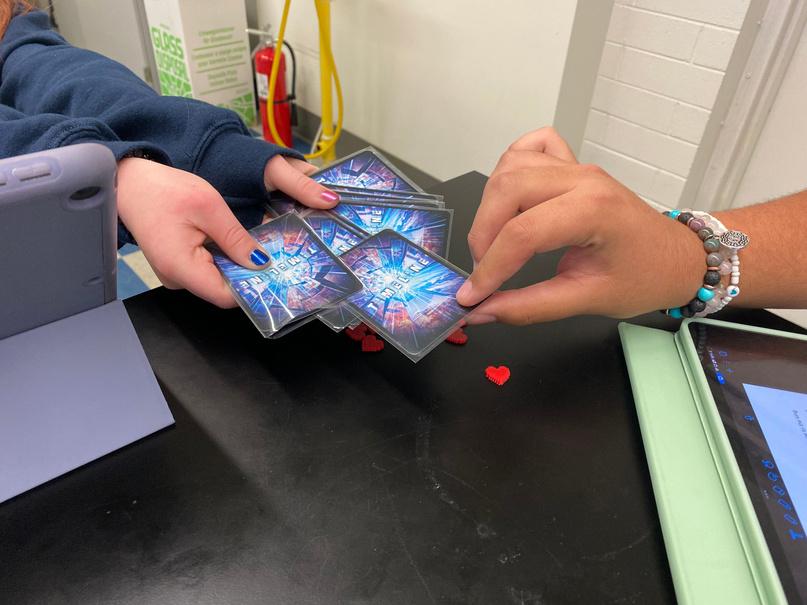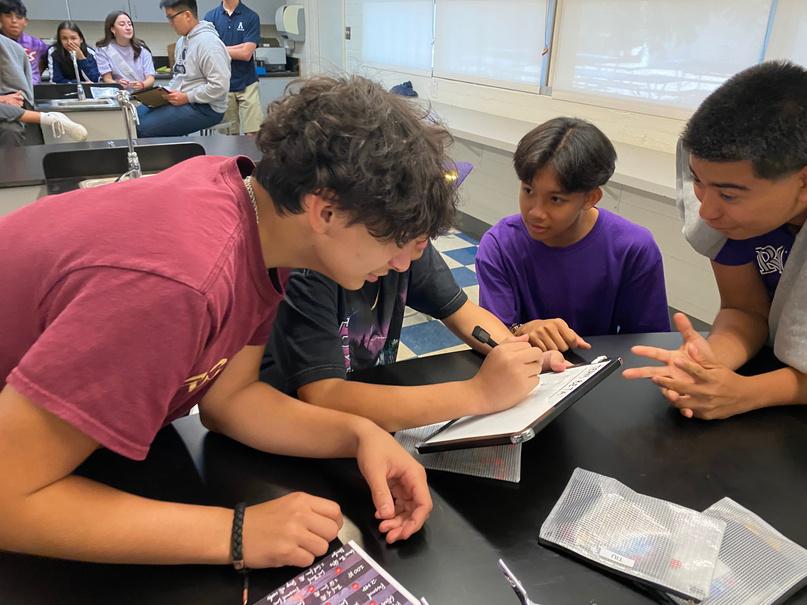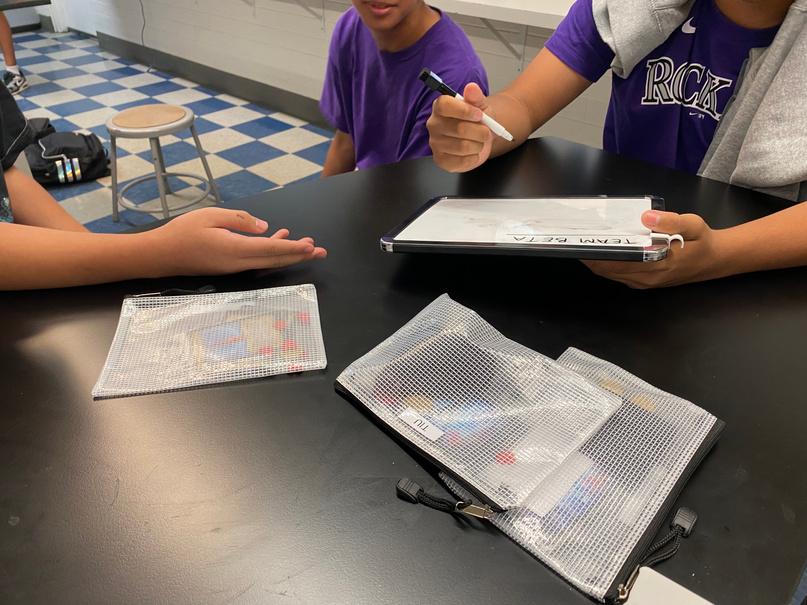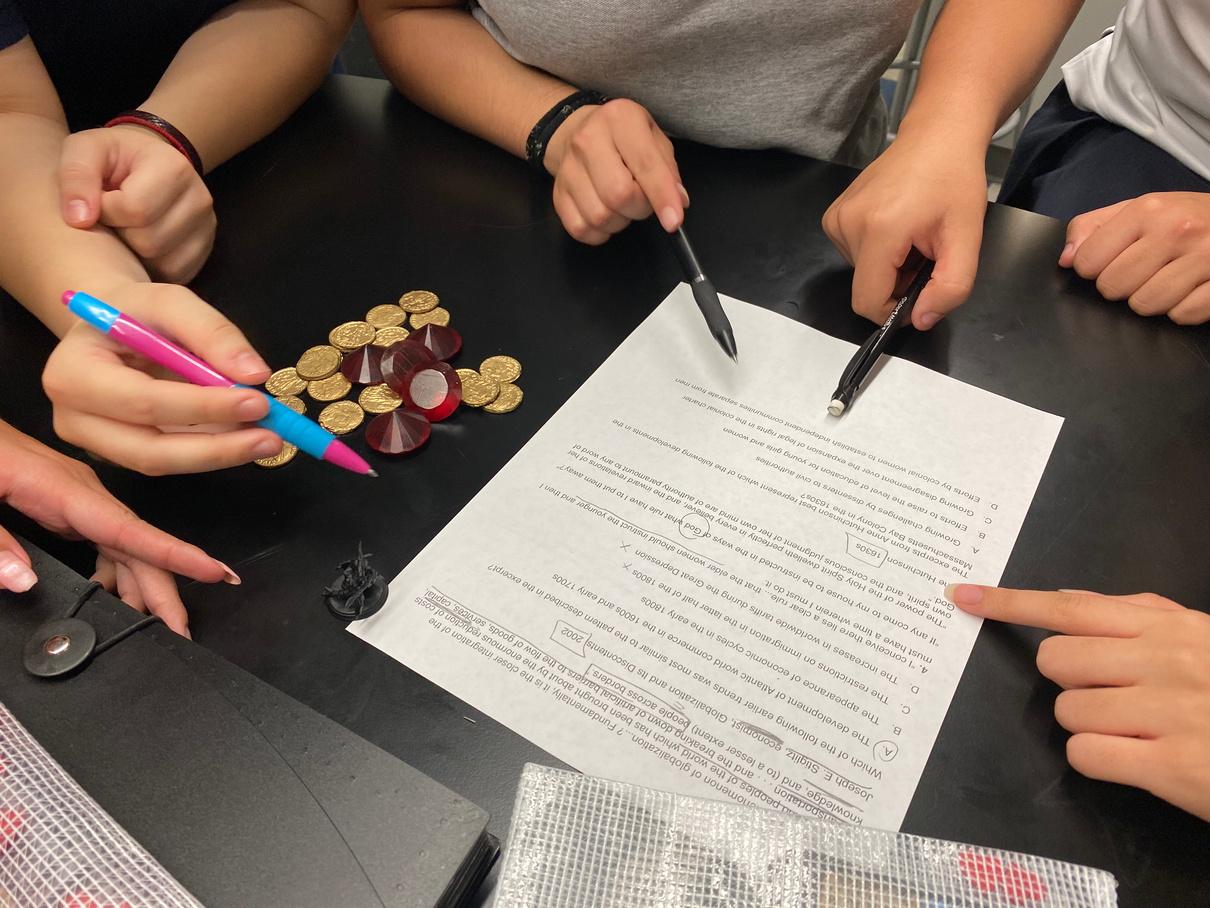
7 minute read
Changing the Game
When you think of gaming, if you ’re like me you might imagine sitting in front of your TV and game console playing video games for hours on end. Or sitting at your computer or tablet working hard in some fantasy land to achieve an objective. What you probably aren’t imagining is sitting in your US or World History class where the entire curriculum has been gamified.
However, for the students of Aquinas High School, that is exactly what they encountered when they stepped into Mr. Keck’s U.S. and World History class this fall. Jonathan Keck has worked at Aquinas for 12 years and serves in various roles from teaching several different sections of history, department chair for Social Sciences, and is the Director of Educational Technology. In that role, he is responsible for researching and developing educational practices paired with new and old techniques and tools to bolster student learning. He and his team train teachers and encourage innovation in the classroom.
Advertisement
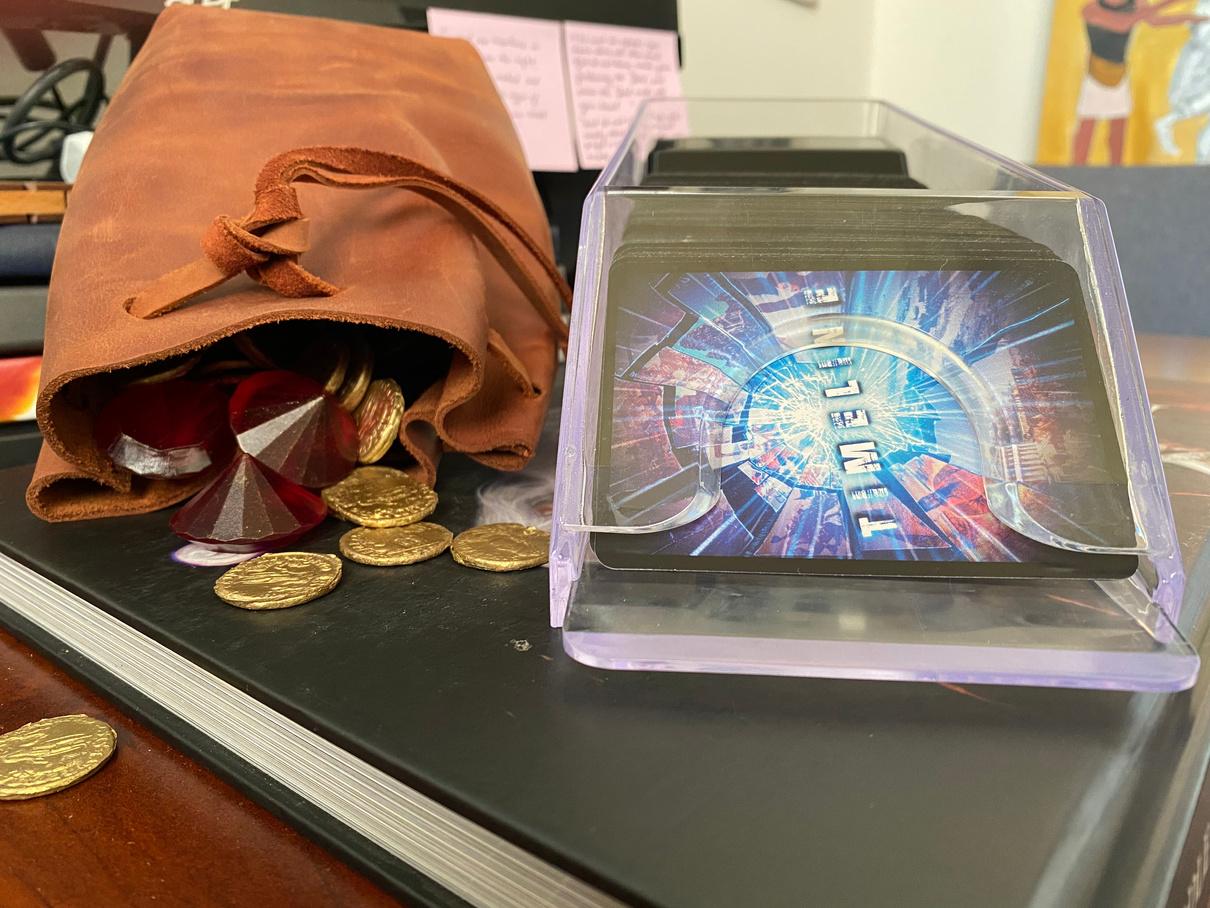
What is gamification exactly? Well according to Keck this a huge question to answer. “So there are two key definitions to consider: Game-Based Learning and Gamification. The first is easy to describe. This method leverages existing or newly created games (the mechanics of a game) and encourages student learning. This is not new. Game theory is used by the military and game-based learning is leveraged for training— think war games, paintball, etc. Those games develop and hone a skill that is trying to be taught. Similarly, Game-Based Learning in any other context is the attempt to play a game and, through it, learn something about the content or review existing knowledge. An example of this might be Trivial Pursuit or Charades. These games help review and reinforce existing knowledge. Finding and developing games that teach the content is a harder thing to find and develop. These games can look very different depending on the content. Escape Rooms are a common type of game that became popular a few years ago and can help students learn. Our culture loves games and there is no shortage of examples, from board games to TV show games. Gamification, however, is a different beast.
It was through this innovation that Mr. Keck came up his year-long game (gamification) called “Timeline” . He had noticed a lot of energy in applying these ideas to the learning environment lately and after coming across a community of teachers doing this sort of work on Twitter and at a few education conferences in the last few years, he decided to implement this process in his classroom. “With the increased interest in engagement in the post-covid learning environment coupled with the popularity of fantasy and Dungeons and Dragons right now and the rate of technological innovation, gamification is poised to be a major educational movement in the next decade” said Keck.
This approach has also become rather popular today, especially among businesses. Gamifying an experience, business, or classroom environment is about leveraging game mechanics to produce desired behavioral outcomes. The most common example of this today might be from Starbucks with their Stars program. Each time someone buys a coffee, they achieve stars that build toward a free drink (or free swag if you have enough). Weekly challenges appear, offering bonus stars if you have a five-day streak or purchase 4 lattes in the next week. Similarly, Apple also unlocks badges the more you move or exercise via the Apple Watch, encouraging the participant's behavior through the mechanics or positive reinforcement via badges. Now, for my class context, and really the way many educators are moving in this direction. The answer is multifaceted, but at the end of the day, I have gamified (gamifying really since I am still building) to encourage student learning and the desired outcomes I have articulated (turning in the work and doing so in a quality manner). I do believe that Game-Based Learning and Immersion is a fun and engaging method of learning, perhaps the best overall— but it requires a tremendous amount of time, creativity, and finances. Gamification is easier to do since it overlays the entire course and is a system of encouraging behaviors through game mechanics and our own human response to stimulation via positive reinforcement. ” Ultimately though, Keck’s goal is to encourage and engage today's students in a way that will be fun and meaningful.
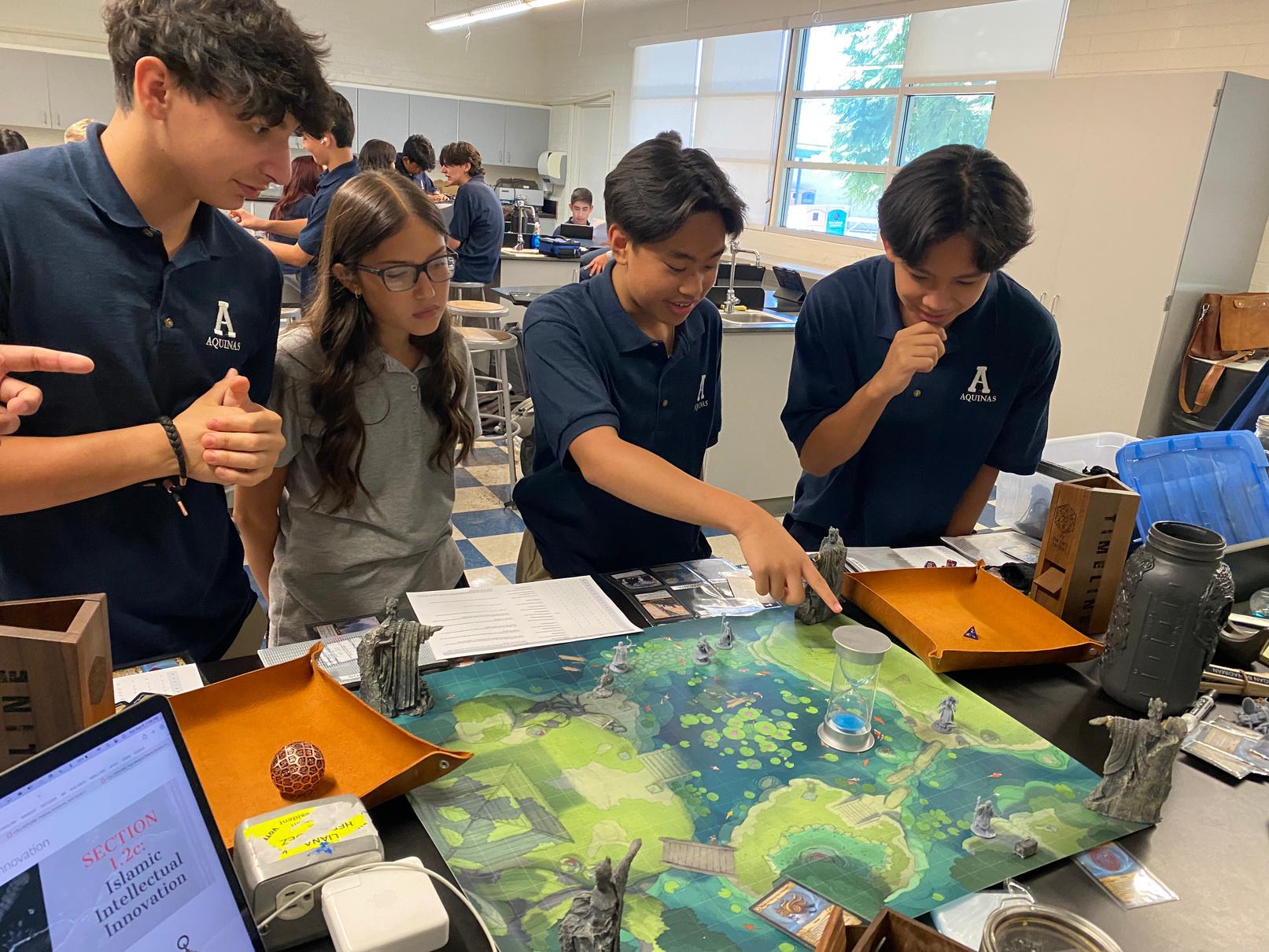
So you might still be wondering what does this look like in the classroom environment? “The students start the year with a story: They are a class of students on a field trip to an innovative company. They get separated from their tour and end up in the R&D area where they are experimenting with opening folds in space to transport cargo instantly. The classic “ wrong place wrong time” accident occurs and the students are thrown back in time. Stranded in the past, students have to find a way back to the present. I created a trailer to introduce the story and we have been working on the narrative interwoven through the content. Storytelling plays a large role in D&D and RPGs, which is the source material and inspiration for a lot of what I am doing. Students create characters, character names, and classes: Warrior, Ranger, etc. and join a team or guild. Students then earn KP (Knowledge Points) based on their work. These points contribute to their character “leveling up” and growing, increasing in skill, health, etc. Student teams are in competition with each other, they earn equipment and item cards, badges, and all sorts of other things as they achieve in the content in the class. Exams are “Boss Battles, ” and assignments are “quests” that students accomplish and unlock certain perks. Students design characters, and we 3D printed their characters to use on a battle map when they explore sidequest “dungeon crawls. ” Battles function like a mix of a test and a game. The enemy asks historical questions. If the student gets the question wrong, the boss strikes the student’s character and they lose health. If they get it right, they have earned their turn and can attack the boss by rolling for damage or using an item card. Students collect gems and coins to use for different functions in the class as the “loot” for completing dungeons and extra tasks. I am currently building an app for our game/class to better track their points and have students submit extra credit content for the game. As far as Game-
Based Learning, it might be an escape room where the answer to escape is buried in the answers to questions, or treasure hunting in a cave mining for "gems" in a historical text. Really any way you can bring story, competition, and fun within our overall game in the everyday history learning tasks we would normally do” explained Keck.With the first semester concluded, the new curriculum has shown to be very positively received. “Students who were already familiar with dungeons and dragons and RPGs recognized what I had built (building) and were excited. But those with no experience in this culture approached it with curiosity and, eventually, excitement. Playing games is a massive part of our culture, especially among young people. This approach is culturally responsive to these students and sees themselves in their characters and the storytelling we are undertaking through our teaching” said Keck.
This new method of teaching also showed improvement in overall student learning. Students were observed to be excited and engaged in unprecedented levels as compared to previous years. Students reported being excited to come to class and wanted to participate in the learning activities. One student wrote, “I love earning the badge at the end of the module or when my character increases a level. I know it doesn’t do much, but it is satisfying seeing the badge when I complete the assignments.” In addition, there has been an 85% reduction in late and missing work due to using game mechanics. Furthermore, 30% of students regularly complete optional work that is not worth any grades. The purpose of these assignments, known as “side quests” is to read primary sources, conduct analysis and write short essays. While it is completely optional, students earn extra experience points for their character and earn gold coins and game currency to buy things at the game store called “Tavern Day.
With the success that Keck has seen in his gamified history classes, he would love to expand to his other sections. However, the one major challenge has been the time and money put into getting this curriculum off the ground. Thankfully, there have been some great donors to support the development but this project has been incredibly expensive. The cost to date hitting thousands of dollars and still a lot more is needed. This on top of the hundreds and hundreds of hours creating the concept and all the materials. In the end though, there has been tremendous success and engagement in learning in just a year. Truly Jonathan Keck and Aquinas are helping to change the game in education!
